Abstract
Three groups of pigeons were trained with a modified discriminative autoshaping procedure to discriminate video images of other pigeons on the basis of movement. Birds of all groups were shown the same video images of other pigeons, which were either moving or still. The group to whom food was presented only after moving images learned the discrimination very quickly. A second group, to whom food was given only after still images, and a pseudocategory group, to whom food was presented after arbitrarily chosen stimuli, showed no evidence of discrimination during acquisition training. Extinction conditions led to clear differences in peck rates to moving and still images in the second group but not in the pseudocategory group. The result is related to the feature-positive effect. Generalization tests showed that the discrimination performance was based on visual features of the stimuli but was invariant against changes of size, perspective, brightness, and color. Furthermore, discrimination was maintained when novel images of pigeons under different viewing angles and seven other types of motion categories were presented. It is argued that the discrimination is based not on a common motion feature but on motion concepts or high-order generalization across motion categories.
Keywords: concept discrimination, movement, feature-positive effect, natural motion categories, video images, key peck, pigeons
Full text
PDF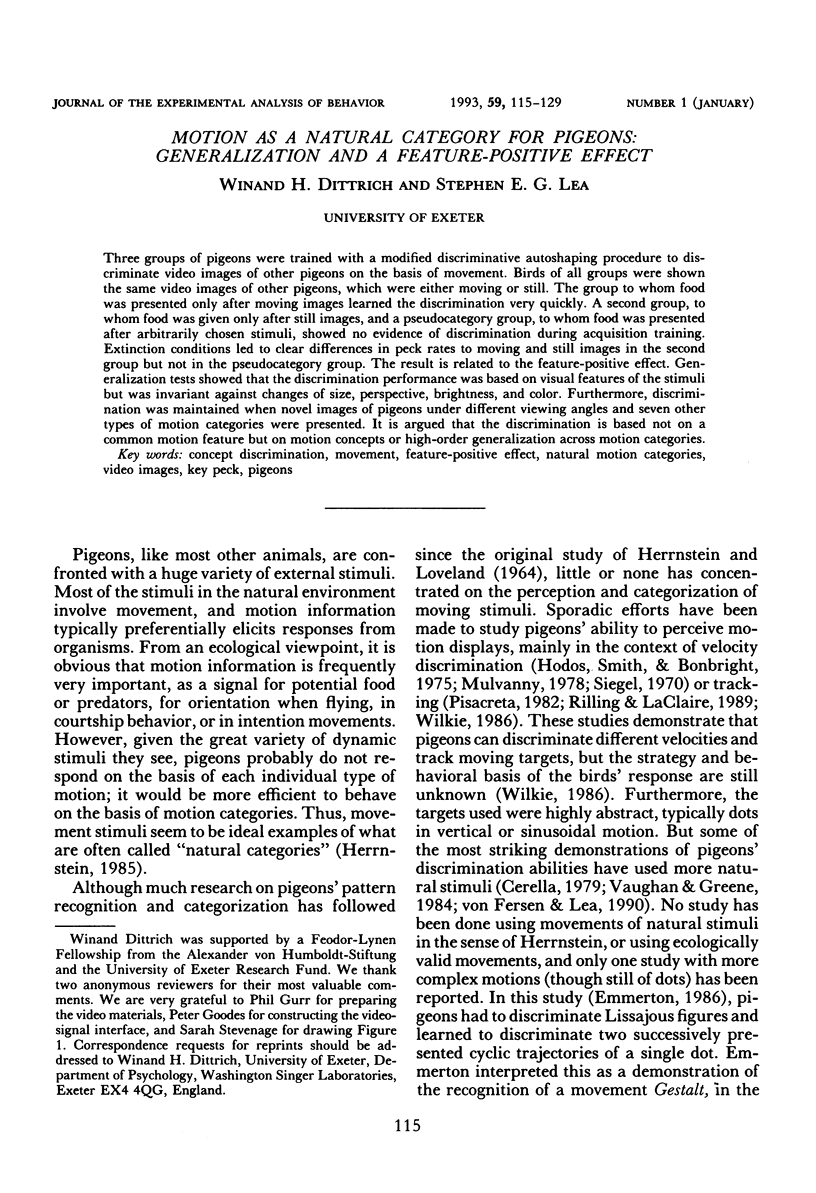
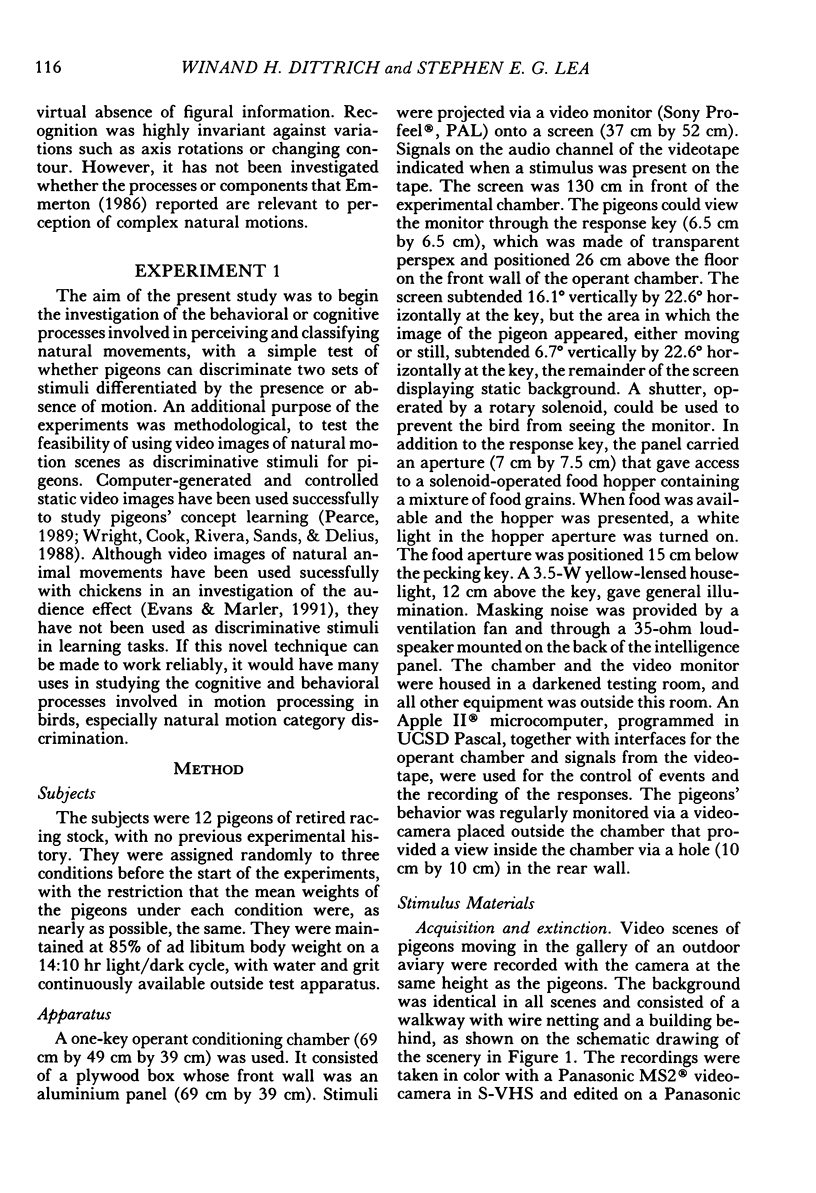
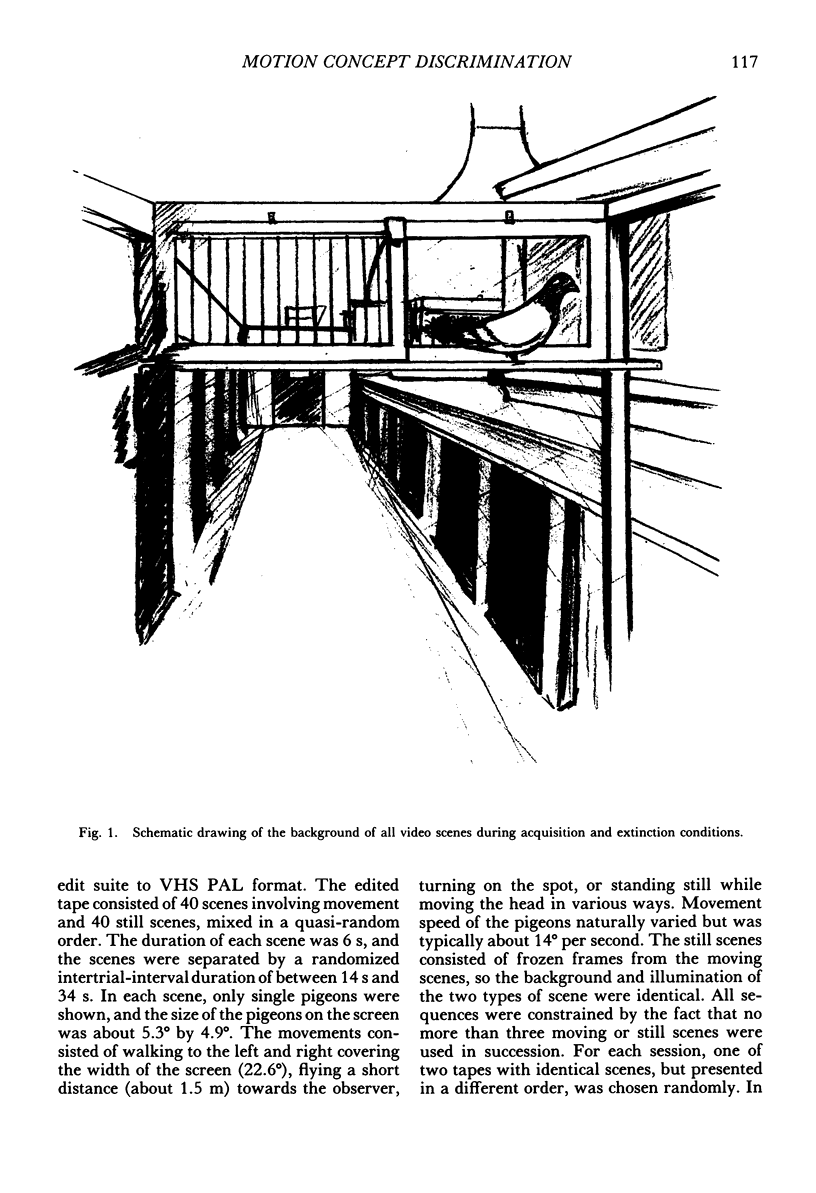
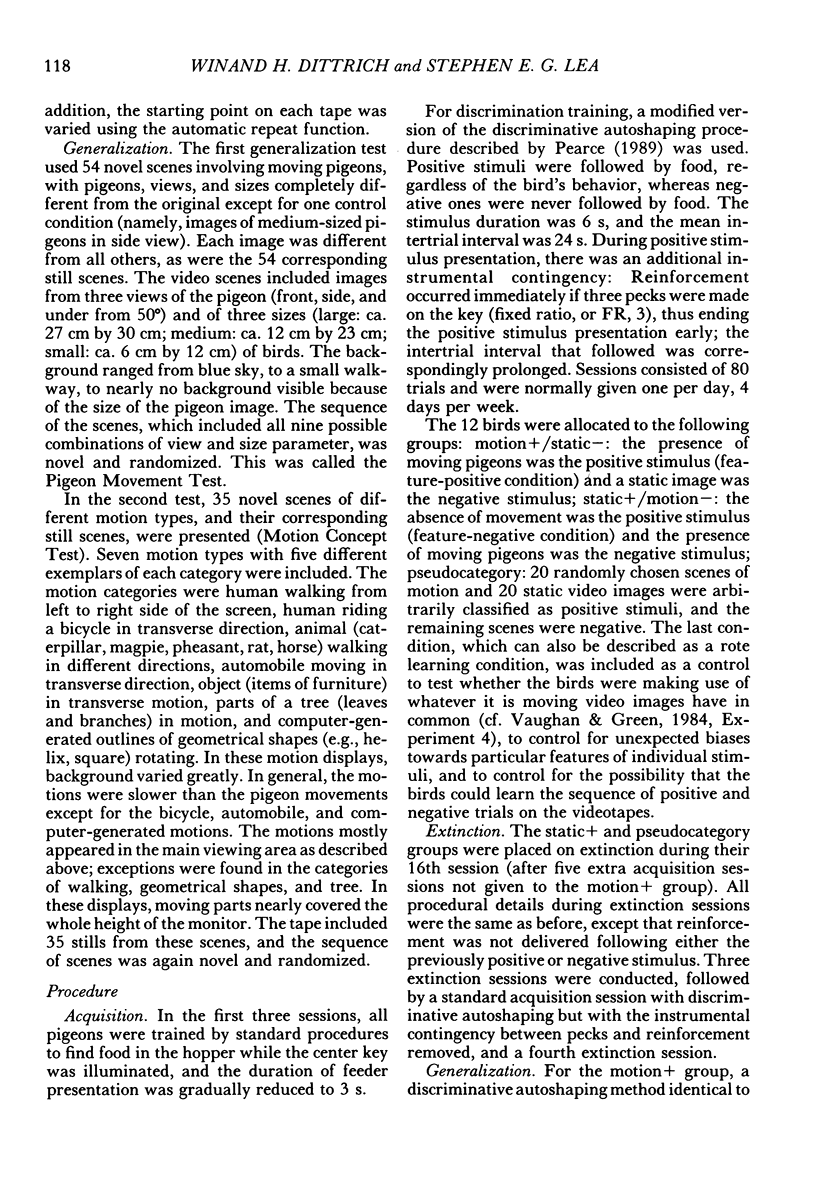
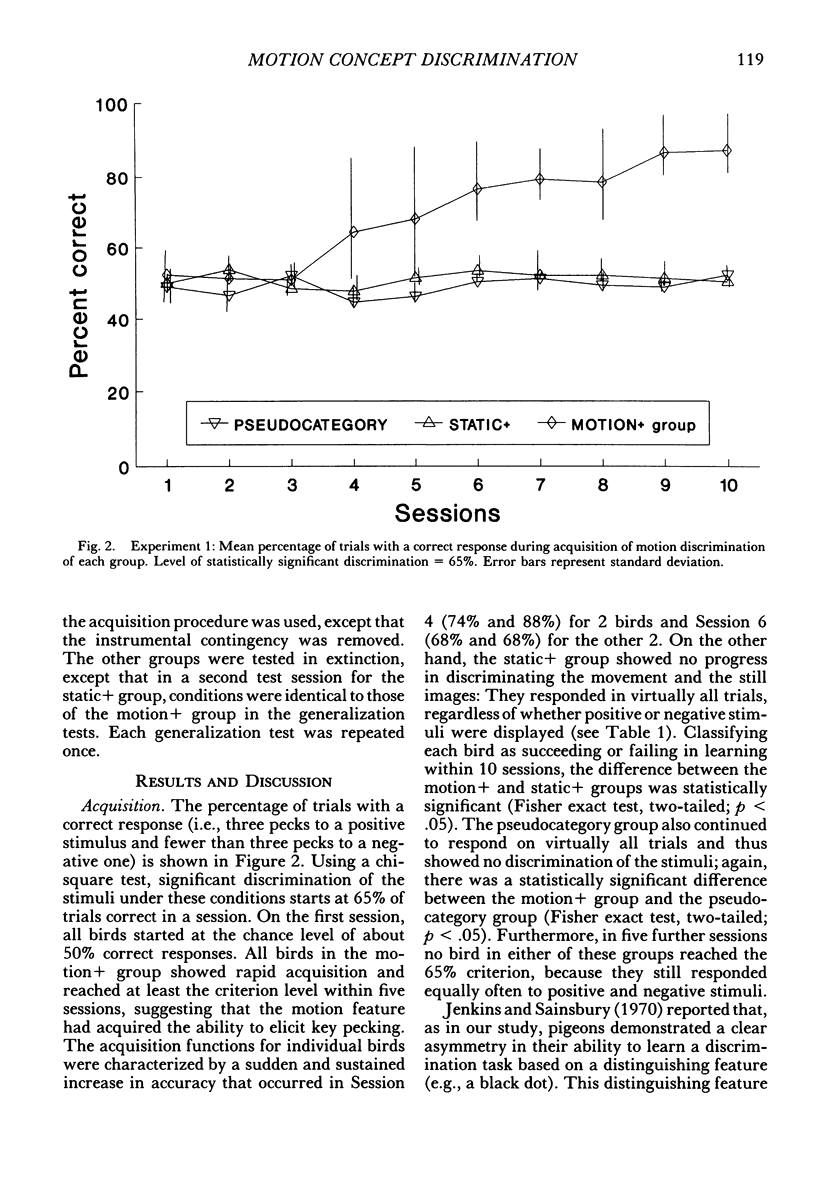
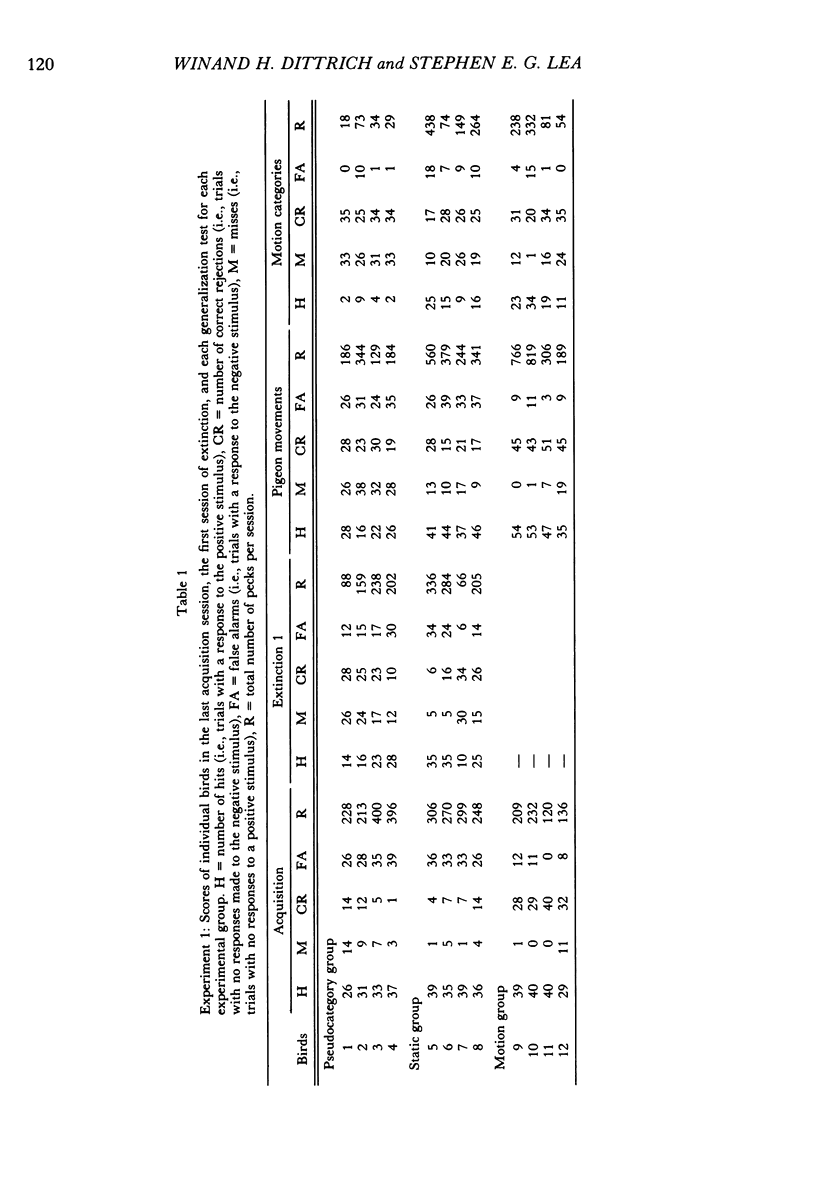
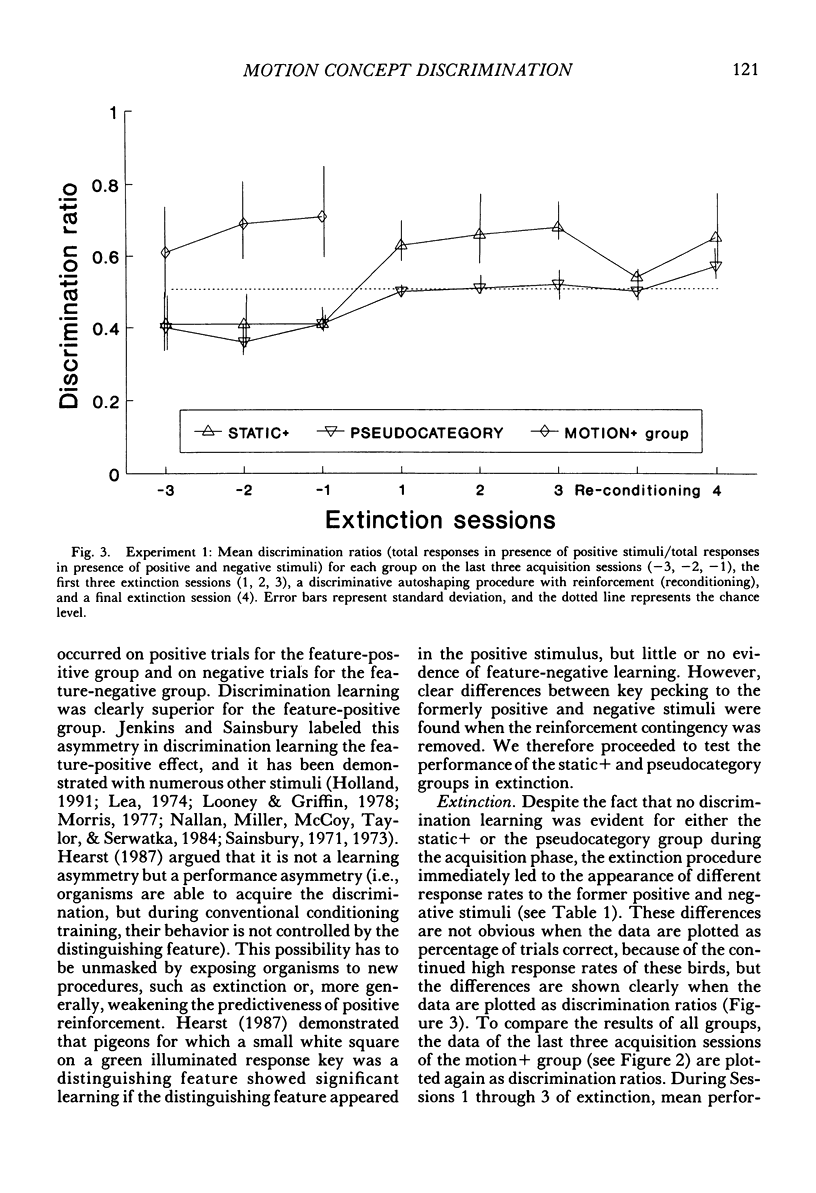
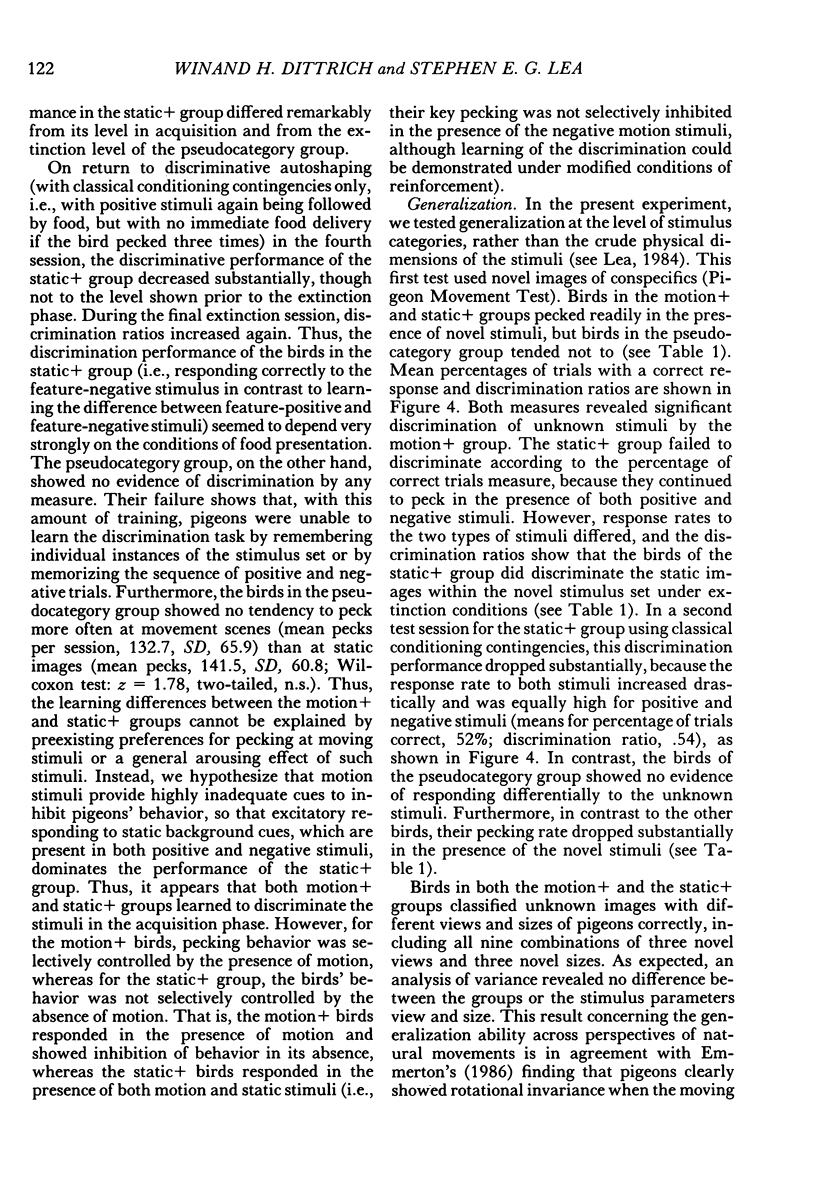
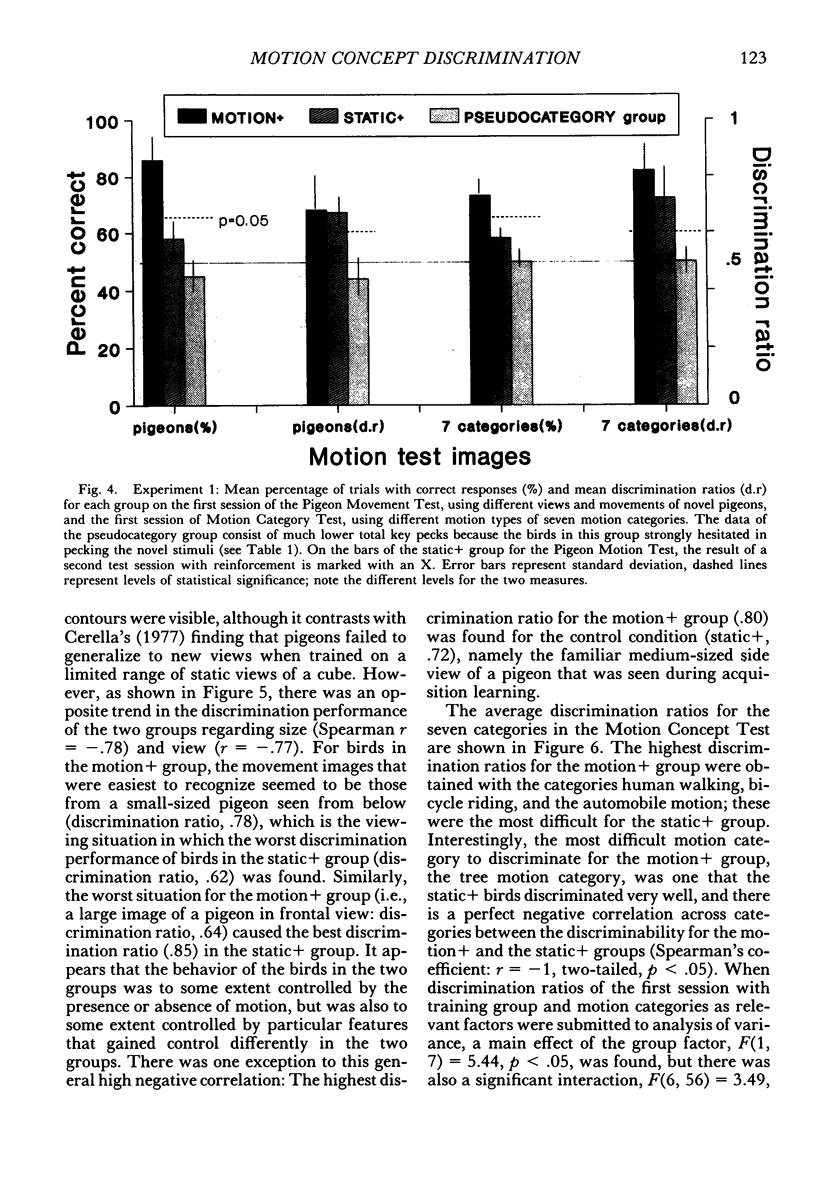
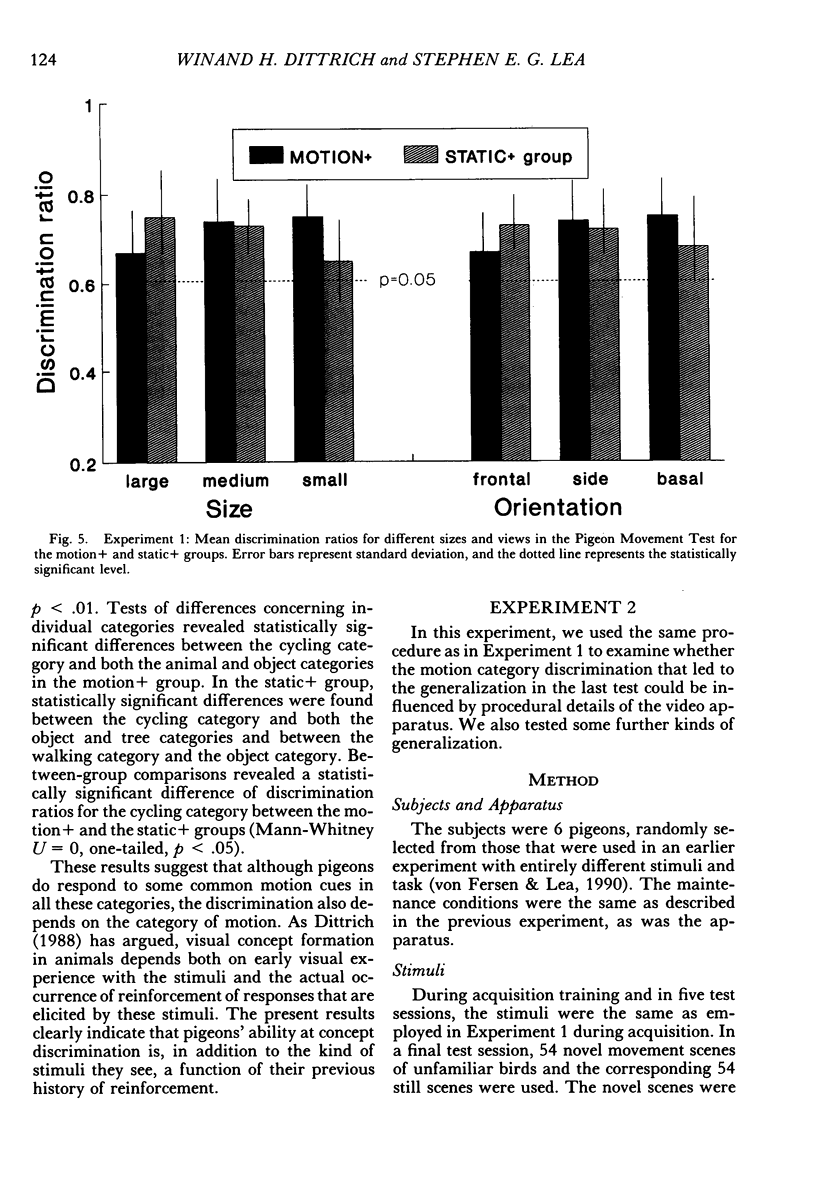
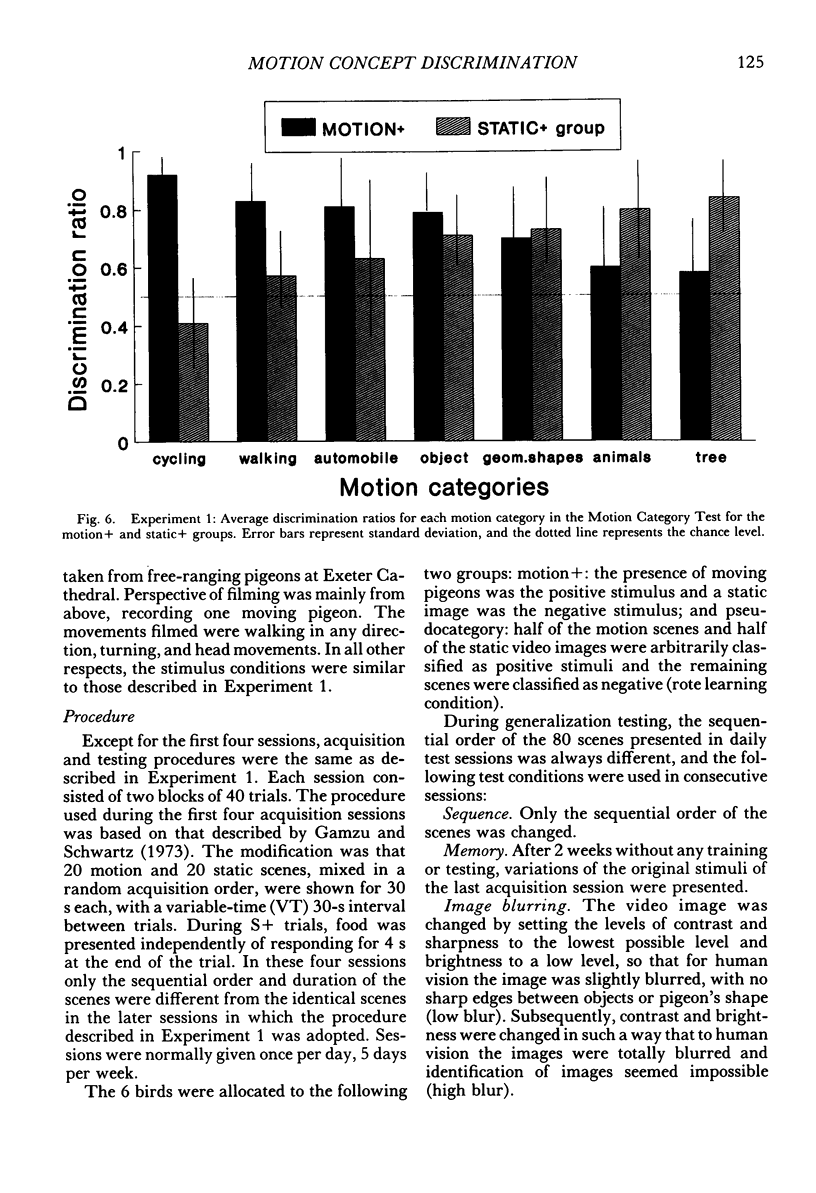
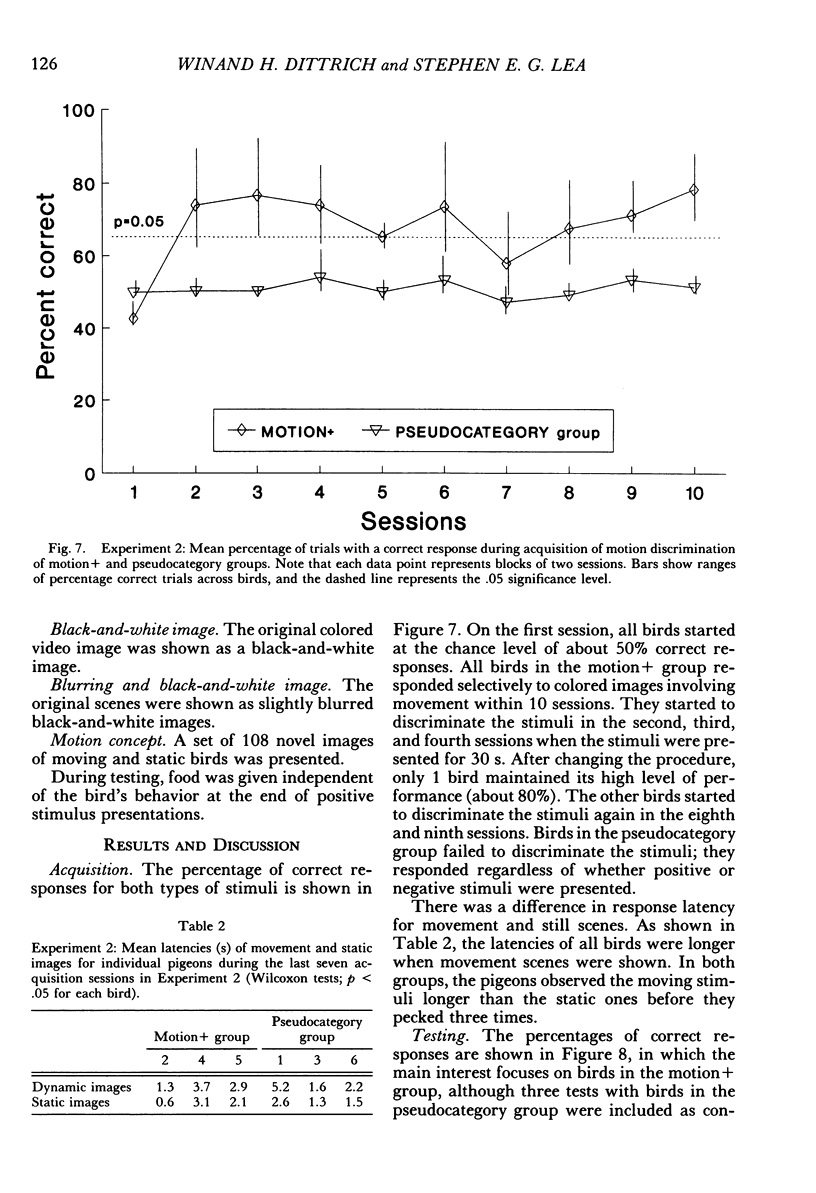
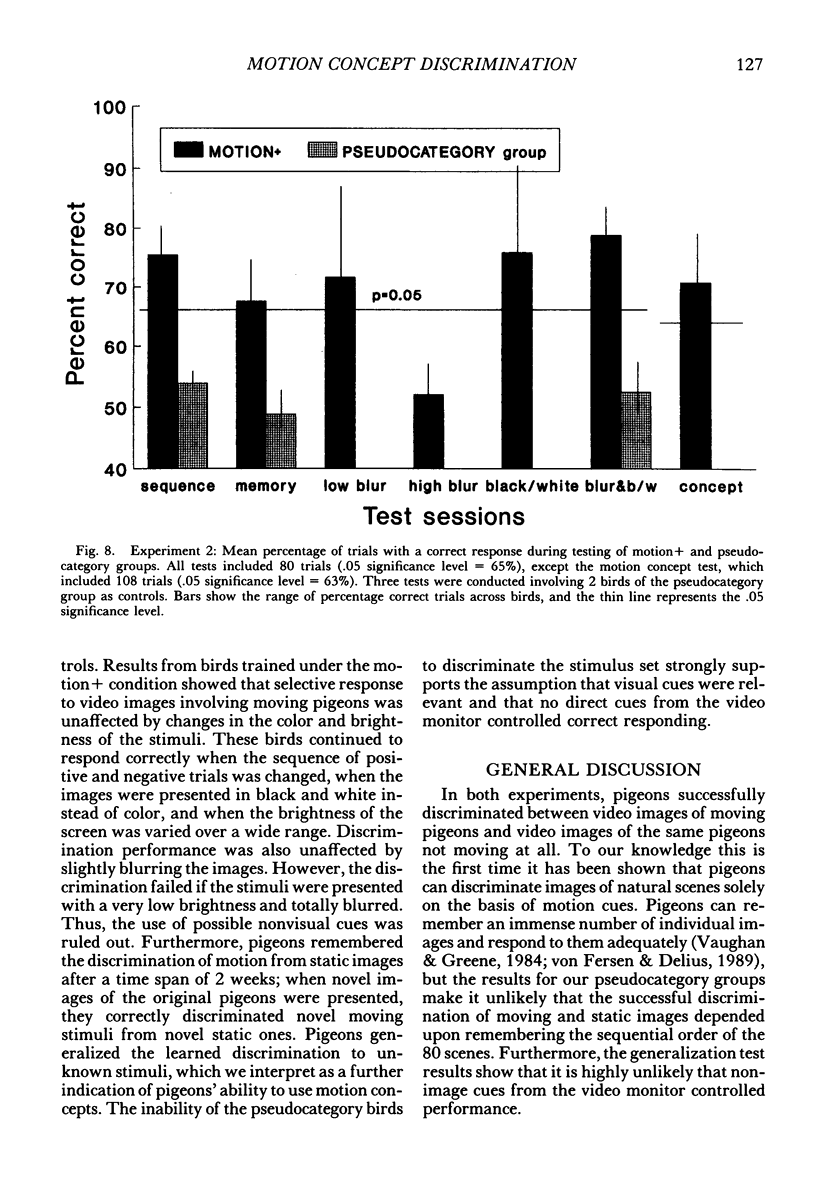
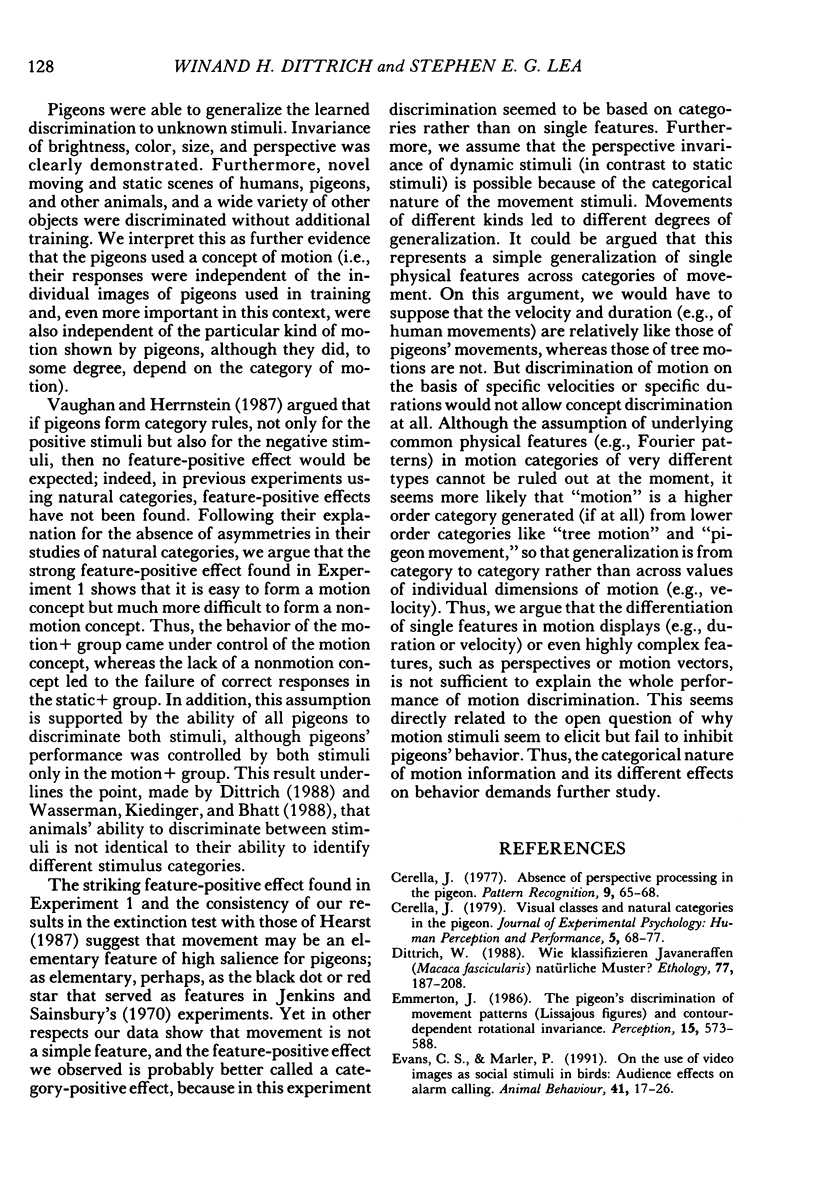
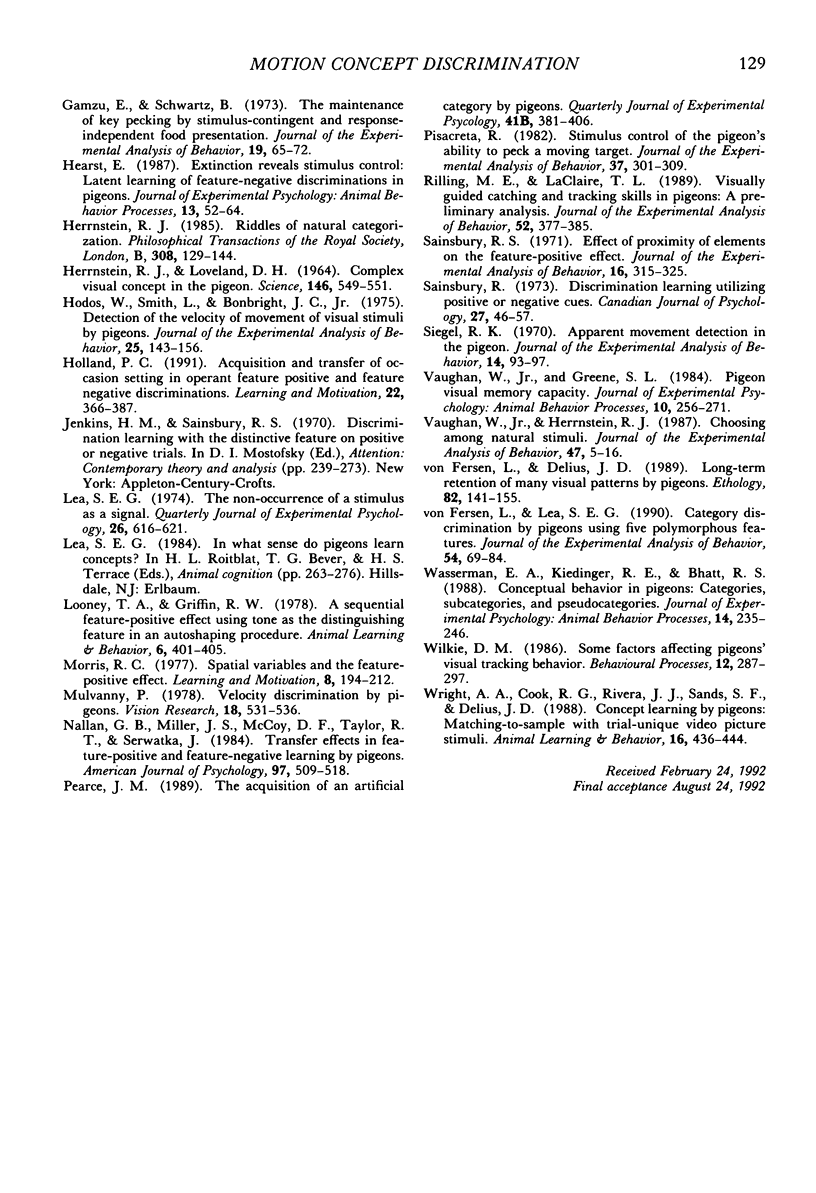
Selected References
These references are in PubMed. This may not be the complete list of references from this article.
- Emmerton J. The pigeon's discrimination of movement patterns (Lissajous figures) and contour-dependent rotational invariance. Perception. 1986;15(5):573–588. doi: 10.1068/p150573. [DOI] [PubMed] [Google Scholar]
- Gamzu E., Schwartz B. The maintenance of key pecking by stimulus-contingent and response-independent food presentation. J Exp Anal Behav. 1973 Jan;19(1):65–72. doi: 10.1901/jeab.1973.19-65. [DOI] [PMC free article] [PubMed] [Google Scholar]
- HERRNSTEIN R. J., LOVELAND D. H. COMPLEX VISUAL CONCEPT IN THE PIGEON. Science. 1964 Oct 23;146(3643):549–551. doi: 10.1126/science.146.3643.549. [DOI] [PubMed] [Google Scholar]
- Hearst E. Extinction reveals stimulus control: latent learning of feature-negative discriminations in pigeons. J Exp Psychol Anim Behav Process. 1987 Jan;13(1):52–64. [PubMed] [Google Scholar]
- Hodos W., Smith L., Bonbright J. C., Jr Detection of the velocity of movement of visual stimuli by pigeons? J Exp Anal Behav. 1976 Mar;25(2):143–156. doi: 10.1901/jeab.1976.25-143. [DOI] [PMC free article] [PubMed] [Google Scholar]
- Mulvanny P. Velocity discrimination by pigeons. Vision Res. 1978;18(5):531–536. doi: 10.1016/0042-6989(78)90198-0. [DOI] [PubMed] [Google Scholar]
- Pisacreta R. Stimulus control of the pigeon's ability to peck a moving target. J Exp Anal Behav. 1982 Mar;37(2):301–309. doi: 10.1901/jeab.1982.37-301. [DOI] [PMC free article] [PubMed] [Google Scholar]
- Rilling M. E., Laclaire T. L. Visually guided catching and tracking skills in pigeons: A preliminary analysis. J Exp Anal Behav. 1989 Nov;52(3):377–385. doi: 10.1901/jeab.1989.52-377. [DOI] [PMC free article] [PubMed] [Google Scholar]
- Sainsbury R. S. Effect of proximity of elements on the feature-positive effect. J Exp Anal Behav. 1971 Nov;16(3):315–325. doi: 10.1901/jeab.1971.16-315. [DOI] [PMC free article] [PubMed] [Google Scholar]
- Siegel R. K. Apparent movement detection in the pigeon. J Exp Anal Behav. 1970 Jul;14(1):93–97. doi: 10.1901/jeab.1970.14-93. [DOI] [PMC free article] [PubMed] [Google Scholar]
- Vaughan W., Herrnstein R. J. Choosing among natural stimuli. J Exp Anal Behav. 1987 Jan;47(1):5–16. doi: 10.1901/jeab.1987.47-5. [DOI] [PMC free article] [PubMed] [Google Scholar]
- Von Fersen L., Lea S. E. Category discrimination by pigeons using five polymorphous features. J Exp Anal Behav. 1990 Sep;54(2):69–84. doi: 10.1901/jeab.1990.54-69. [DOI] [PMC free article] [PubMed] [Google Scholar]


